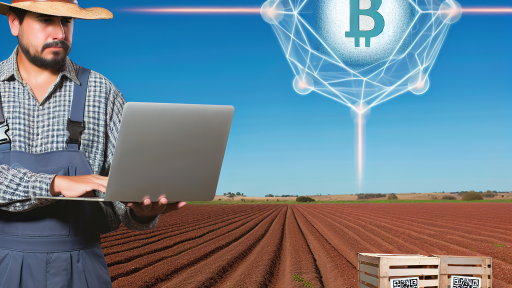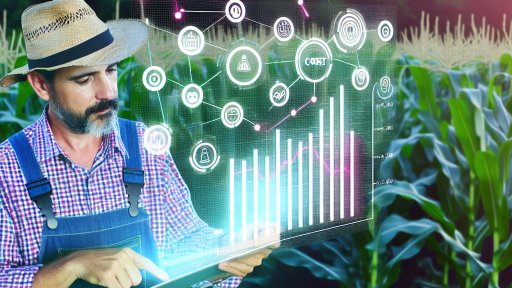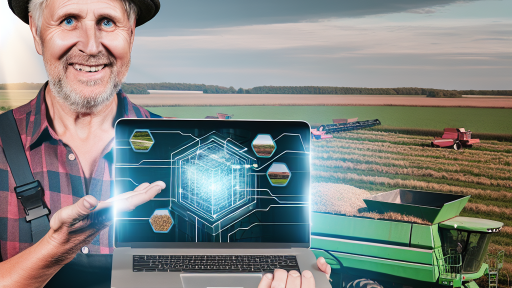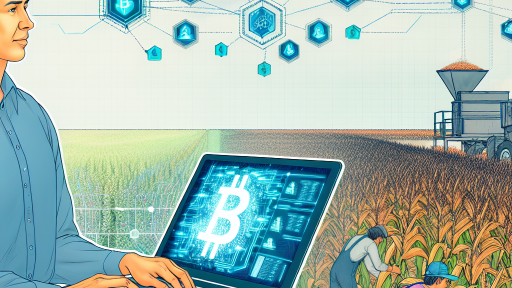Introduction to Integrated Pest Management
Definition of Integrated Pest Management
Integrated Pest Management, or IPM, offers a holistic approach to pest control.
It combines different strategies to manage pests effectively.
This method prioritizes sustainable practices over chemical solutions.
Farmers and gardeners utilize IPM to enhance crop production.
Moreover, it minimizes risks to human health and the environment.
Importance of Integrated Pest Management
IPM plays a critical role in modern agriculture.
It aims to reduce reliance on chemical pesticides.
This approach encourages the use of biological control measures.
Additionally, it emphasizes monitoring and understanding pest life cycles.
Farmers can make informed decisions based on pest activity levels.
By adopting IPM, growers can increase sustainability.
Furthermore, it helps protect beneficial insects and biodiversity.
IPM ultimately contributes to healthier ecosystems.
Stakeholders can achieve better yield predictions through this strategy.
Thus, IPM is key to a successful agricultural future.
Transform Your Agribusiness
Unlock your farm's potential with expert advice tailored to your needs. Get actionable steps that drive real results.
Get StartedOverview of Modern Technologies in Agriculture
Innovative Tools for Pest Management
Modern agriculture deploys numerous innovative tools for effective pest management.
Farmers use drones to monitor crop health and identify pest infestations.
Additionally, satellite imagery provides insights into field conditions.
These technologies enhance the precision of pest control measures.
Data Analytics in Farming
Data analytics plays a significant role in integrated pest management.
Farmers analyze vast datasets to track pest populations over time.
This data-driven approach facilitates timely interventions.
Furthermore, predictive analytics enables proactive measures against potential outbreaks.
Biological Control Solutions
Modern technology also advances biological pest control methods.
For example, beneficial insects are released to combat harmful pests.
These approaches reduce dependency on chemical pesticides.
Hence, farmers achieve sustainable pest management outcomes.
Smart Irrigation Systems
Smart irrigation systems contribute to pest management indirectly.
These systems optimize water usage based on real-time data.
Effective water management minimizes conditions favorable for pests.
As a result, pest populations are less likely to thrive.
Remote Sensing Technologies
Remote sensing technologies enhance the understanding of pest dynamics.
Farmers utilize sensors to gather data on plant stress and pest presence.
This information aids in targeted pest management applications.
Ultimately, it leads to reduced chemical use and improved yields.
Mobile Applications for Real-Time Monitoring
Mobile applications have revolutionized pest detection and management.
Farmers can report and track pest sightings in real time.
These applications often include identification tools and management recommendations.
Consequently, farmers make informed decisions quickly.
Showcase Your Farming Business
Publish your professional farming services profile on our blog for a one-time fee of $200 and reach a dedicated audience of farmers and agribusiness owners.
Publish Your ProfileArtificial Intelligence in Pest Prediction
Artificial intelligence (AI) plays an emerging role in agriculture.
AI analyzes data to predict pest outbreaks with high accuracy.
This technology enhances the decision-making process for farmers.
Moreover, AI can suggest optimal pest control measures.
Data-Driven Approaches: Utilizing Big Data for Pest Prediction and Management
Introduction to Big Data in Pest Management
Big data empowers pest management with innovative solutions.
This technology gathers vast amounts of information effortlessly.
Consequently, it enhances our understanding of pest patterns.
Predictive Analytics in Agriculture
Predictive analytics uses historical data to forecast pest outbreaks.
Farmers can identify high-risk periods for infestations.
By doing so, they can implement proactive measures in advance.
For instance, analyzing weather patterns reveals pest vulnerability.
Data Collection Methods
Multiple methods gather data for pest management applications.
- Remote sensing monitors crop health and pest populations.
- IoT devices track environmental conditions in real-time.
- Mobile applications allow farmers to report pest sightings promptly.
These methods provide comprehensive insights for effective strategies.
Integration of Machine Learning
Machine learning algorithms analyze large datasets quickly.
They recognize complex patterns that human analysts might miss.
Consequently, these algorithms improve pest prediction accuracy.
For example, algorithms can learn from historical outbreak data.
Case Studies of Successful Implementation
Organizations are achieving remarkable pest management results.
- Agricultural Tech Solutions improved crop yield by 30%
- Green Fields utilized data to reduce pesticide usage by 25%
- Farmers United successfully decreased pest-related losses significantly.
These outcomes demonstrate the effectiveness of data-driven practices.
Challenges and Future Directions
Despite advancements, several obstacles remain in pest management.
Data quality is crucial for reliable predictions.
Additionally, training farmers to use technology effectively poses challenges.
However, the future looks promising as technology continues to evolve.
Explore Further: Enhancing Farm Efficiency Using AI
Remote Sensing Technologies: Drones and Satellites in Pest Monitoring
Introduction to Remote Sensing
Remote sensing technology plays a crucial role in modern agriculture.
It enables farmers to monitor crops efficiently and protect them from pests.
Moreover, this technology helps collect valuable data for informed decision-making.
How Drones Enhance Pest Monitoring
Drones provide high-resolution aerial imagery of farmland.
This imagery helps identify pest infestations quickly and accurately.
Farmers can deploy drones to survey large areas in a short time.
Additionally, they can analyze plant health and detect issues early.
Many companies are developing specialized drones for agricultural use, such as AgEagle and DJI.
Satellite Technologies for Agriculture
Satellites offer a broader perspective of agricultural landscapes.
They can track changes in crop health over time.
This capability is invaluable for understanding pest patterns and outbreaks.
Satellites like Sentinel-2 provide critical data on vegetation indices.
This data assists farmers in making proactive pest management decisions.
Integration of Drone and Satellite Data
Combining drone and satellite data enhances pest management strategies.
This integrated approach provides comprehensive insights into crop health.
By using both technologies, farmers can optimize their monitoring efforts.
Showcase Your Farming Business
Publish your professional farming services profile on our blog for a one-time fee of $200 and reach a dedicated audience of farmers and agribusiness owners.
Publish Your ProfileAs a result, they save time and resources while maximizing efficiency.
Benefits of Remote Sensing in Pest Management
- Improves accuracy in identifying pest infestations.
- Facilitates timely intervention and treatment measures.
- Reduces reliance on pesticides, promoting sustainable practices.
- Enhances overall crop yields and farm profitability.
Challenges and Considerations
Despite their advantages, remote sensing technologies come with challenges.
Data interpretation requires expertise and technical knowledge.
Moreover, initial investment costs for drones and satellite services can be high.
Farmers must balance these challenges against the long-term benefits.
Future Trends in Pest Monitoring
The future of pest monitoring will likely see more automation.
Advancements in artificial intelligence will improve data analysis.
Additionally, the integration of IoT will allow for real-time monitoring.
These trends will make pest management more precise and efficient.
Ultimately, technology will play a pivotal role in sustainable agriculture.
You Might Also Like: How Automated Machinery Reduces Labor In Agriculture
Biological Control Methods: Leveraging Natural Predators and Biopesticides
Understanding Biological Control
Biological control utilizes living organisms to manage pest populations.
This method reduces reliance on chemical pesticides.
Natural predators, parasites, and pathogens play a crucial role.
Farmers can introduce these organisms at strategic times.
Natural Predators
Natural predators help maintain pest populations within acceptable limits.
Ladybugs are famous for controlling aphids.
Additionally, lacewings target various pest insects.
Birds, such as sparrows, further assist in pest reduction.
Properly integrating these species can enhance outcomes.
Biopesticides
Biopesticides offer an alternative to synthetic pesticides.
These products originate from natural materials.
Microbial biopesticides contain living microorganisms.
Examples include Bacillus thuringiensis, effective against caterpillars.
Biochemical biopesticides utilize natural substances to disrupt pest behavior.
Implementing Biological Control
Farmers must evaluate their specific pest problems first.
Next, they should research suitable natural enemies.
Introducing natural predators requires planning and timing.
Close monitoring of pest and natural enemy interactions is essential.
Adjustments may be necessary based on observed results.
Combining Methods for Effectiveness
Integrating biological methods with cultural practices often yields better results.
Crop rotation and habitat manipulation enhance biological control.
Such combinations can create a more resilient ecosystem.
Regular assessments help fine-tune these strategies over time.
Ultimately, embracing biological control promotes sustainability in agriculture.
You Might Also Like: Transforming Farm Operations Through Blockchain-Based Supply Chains
Smart Agriculture: Implementation of IoT Devices for Real-Time Pest Management
Understanding IoT in Agriculture
The Internet of Things (IoT) revolutionizes agricultural practices.
It connects devices, sensors, and software to optimize farm management.
Farmers can now monitor crops and environmental conditions remotely.
This technology enables real-time data collection for informed decisions.
Showcase Your Farming Business
Publish your professional farming services profile on our blog for a one-time fee of $200 and reach a dedicated audience of farmers and agribusiness owners.
Publish Your ProfileBenefits of IoT Devices in Pest Management
IoT devices enhance pest control by providing timely insights.
Farmers can detect pest infestations before they escalate.
This proactive approach reduces crop damage significantly.
Moreover, it minimizes the use of harmful pesticides.
Effective pest management promotes sustainable farming practices.
Types of IoT Devices Used in Pest Management
- Soil moisture sensors monitor moisture levels.
- Weather stations provide data on climatic conditions.
- Cameras equipped with AI detect pest activity.
- Drone technology surveys large farm areas quickly.
Implementing IoT Solutions: A Step-by-Step Guide
First, assess your farm’s specific needs and challenges.
Next, choose the right IoT devices that fit those requirements.
Then, integrate these devices with a farm management system.
Training staff on how to use the technology is crucial.
Finally, collect and analyze data for continuous improvement.
Case Studies of Successful IoT Implementation
FarmTech Solutions recently improved pest management using IoT.
Their sensors detected pests early, reducing losses by 40%.
Additionally, GreenFields Farm utilized drones for mapping.
This led to a 30% increase in yield over a growing season.
Such success stories highlight the potential of IoT in agriculture.
Delve into the Subject: How Drones Enhance Crop Monitoring And Management
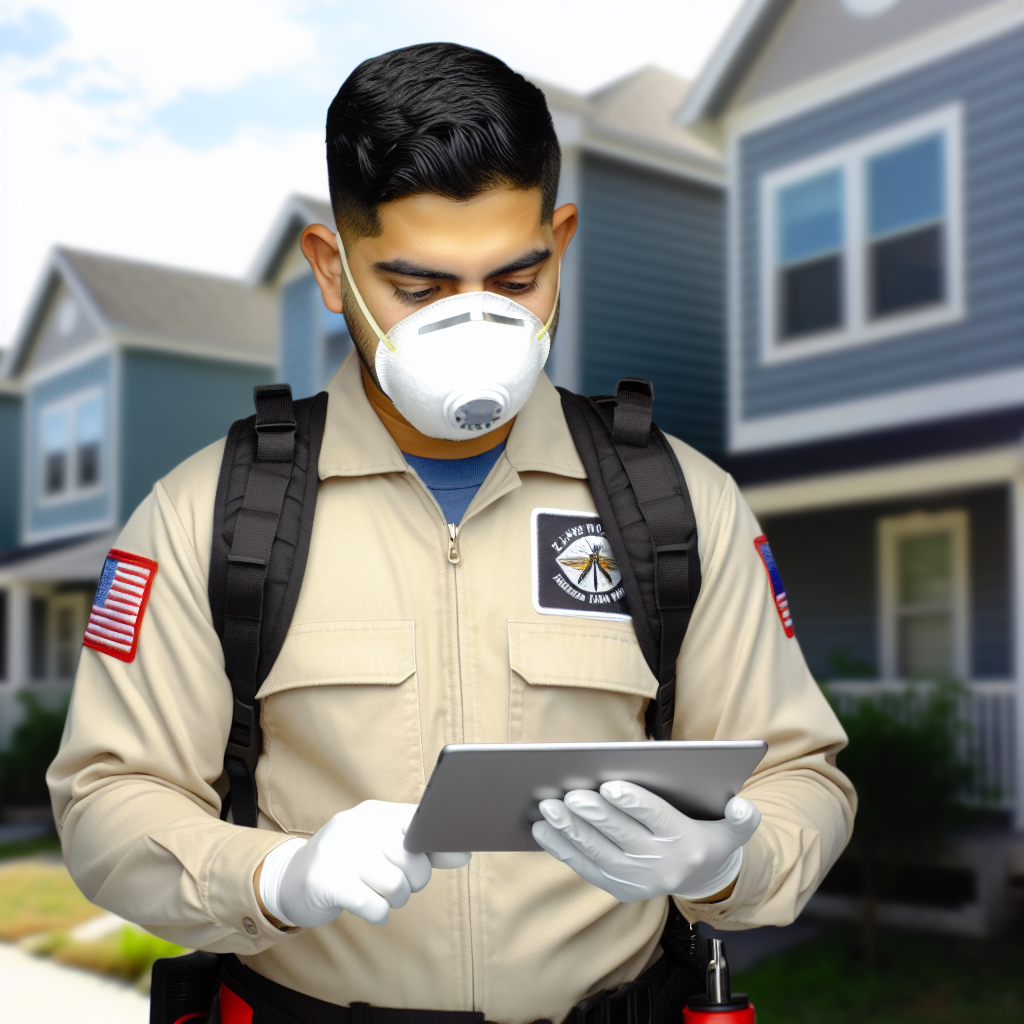
Case Studies: Successful IPM Strategies Using Modern Technology
Innovative Use of Drones in Agriculture
Drones have transformed pest monitoring in agriculture.
Farmers deploy drones to survey large fields quickly.
This technology helps in early detection of pest outbreaks.
For instance, GreenField Farms implemented drones and saw a 30% reduction in pesticide use.
Additionally, aerial imagery provides data on crop health.
Integration of IoT Sensors
The Internet of Things (IoT) offers real-time monitoring of environmental conditions.
Sensors can detect humidity, soil moisture, and temperature changes.
This data allows farmers to make informed decisions.
For example, EcoGrow Farms uses sensors to assess pest populations accurately.
Consequently, they have reduced pesticide applications by 20%.
Mobile Applications for Pest Identification
Mobile apps enable swift pest identification and management.
Farmers use these tools to receive pest alerts instantly.
Growers at FreshHarvest learned about pest-resistant crops through such apps.
They successfully minimized their reliance on chemical treatments.
In fact, user feedback indicates higher satisfaction with pest management outcomes.
Data Analytics for Predictive Modeling
Data analytics is crucial for predictive modeling in pest management.
Farmers analyze historical pest data to predict future outbreaks.
AgroScience Institute applied predictive analytics to enhance crop yield.
This method helped them anticipate pest issues before they escalated.
As a result, they achieved a 25% increase in yields.
Collaboration with Agricultural Tech Startups
Collaboration between farmers and tech startups is vital for innovation.
Startups provide cutting-edge technology solutions for pest control.
For instance, AgroTech Innovations partners with local growers.
They develop custom solutions tailored for specific pest challenges.
Showcase Your Farming Business
Publish your professional farming services profile on our blog for a one-time fee of $200 and reach a dedicated audience of farmers and agribusiness owners.
Publish Your ProfileThis partnership has improved overall pest management effectiveness.
Challenges and Ethical Considerations in Implementing Technology-Driven IPM
Technological Barriers
Adopting technology-driven Integrated Pest Management (IPM) faces several technological barriers.
Firstly, many farmers lack access to advanced technology.
This can hinder the implementation of precision agriculture tools.
Moreover, the high costs of technology can be prohibitive for smallholder farmers.
Consequently, many may stick to traditional pest control methods.
Data Privacy and Security
Another concern centers on data privacy and security.
The collection of data on farming practices raises privacy issues.
Farmers may feel apprehensive about sharing sensitive information.
Indeed, data breaches can jeopardize their livelihoods.
Thus, establishing robust data protection measures is vital.
Environmental Impacts
Additionally, the environmental impacts of technology must be considered.
Some technological solutions may inadvertently harm beneficial organisms.
For example, specific pesticides can affect non-target species.
This could disrupt local ecosystems over time.
Balancing technology use with environmental health is essential.
Ethical Considerations
Moreover, ethical considerations play a significant role in implementing technology-driven IPM.
Farmers must assess the ethical implications of their practices.
Technologies should promote sustainability rather than encourage reliance on chemicals.
In addition, there must be a focus on equitable access to these technologies.
Addressing inequalities ensures fair benefits for all farmers.
Education and Training
Transitioning to technology-driven IPM requires education and training.
Many farmers may lack the skills to use new technologies effectively.
Therefore, providing access to training programs is crucial.
These initiatives can empower farmers to utilize technology efficiently.
Furthermore, ongoing support systems can enhance their learning experience.
Future Trends in IPM: The Role of Artificial Intelligence and Machine Learning
Enhancing Pest Management with Technology
Artificial intelligence is revolutionizing Integrated Pest Management (IPM).
It enables farmers to make data-driven decisions efficiently.
Machine learning models analyze vast amounts of agricultural data.
This analysis improves prediction accuracy for pest infestations.
Real-time Monitoring and Decision Support
AI-powered systems provide real-time monitoring solutions.
These systems track pest populations in various environments.
Farmers receive timely alerts about potential outbreaks.
Consequently, they can deploy control measures more effectively.
Data Integration for Precision Agriculture
Integrating data from multiple sources enhances IPM strategies.
Drones and satellites collect vital information about crop health.
AI algorithms process this data to identify trends.
Farmers can tailor their pest management approaches accordingly.
Predictive Analytics for Proactive Measures
Predictive analytics is a game changer in pest management.
AI models forecast pest behavior and population dynamics.
Showcase Your Farming Business
Publish your professional farming services profile on our blog for a one-time fee of $200 and reach a dedicated audience of farmers and agribusiness owners.
Publish Your ProfileThis foresight allows farmers to act before infestations occur.
Proactive measures lead to reduced chemical use and crop losses.
Improving Sustainability with Targeted Solutions
AI-driven IPM strategies support sustainable agriculture practices.
Targeted interventions minimize ecological disruption.
This approach lessens the reliance on broad-spectrum pesticides.
As a result, it enhances biodiversity on farms.
Challenges and Opportunities Ahead
Despite the benefits, challenges remain in AI implementation.
Data privacy and access issues must be addressed.
Farmers need training to effectively use AI tools.
Nonetheless, the opportunities for advancement are vast.
Additional Resources
USDA Science and Research Strategy, 2023-2026: Cultivating …

